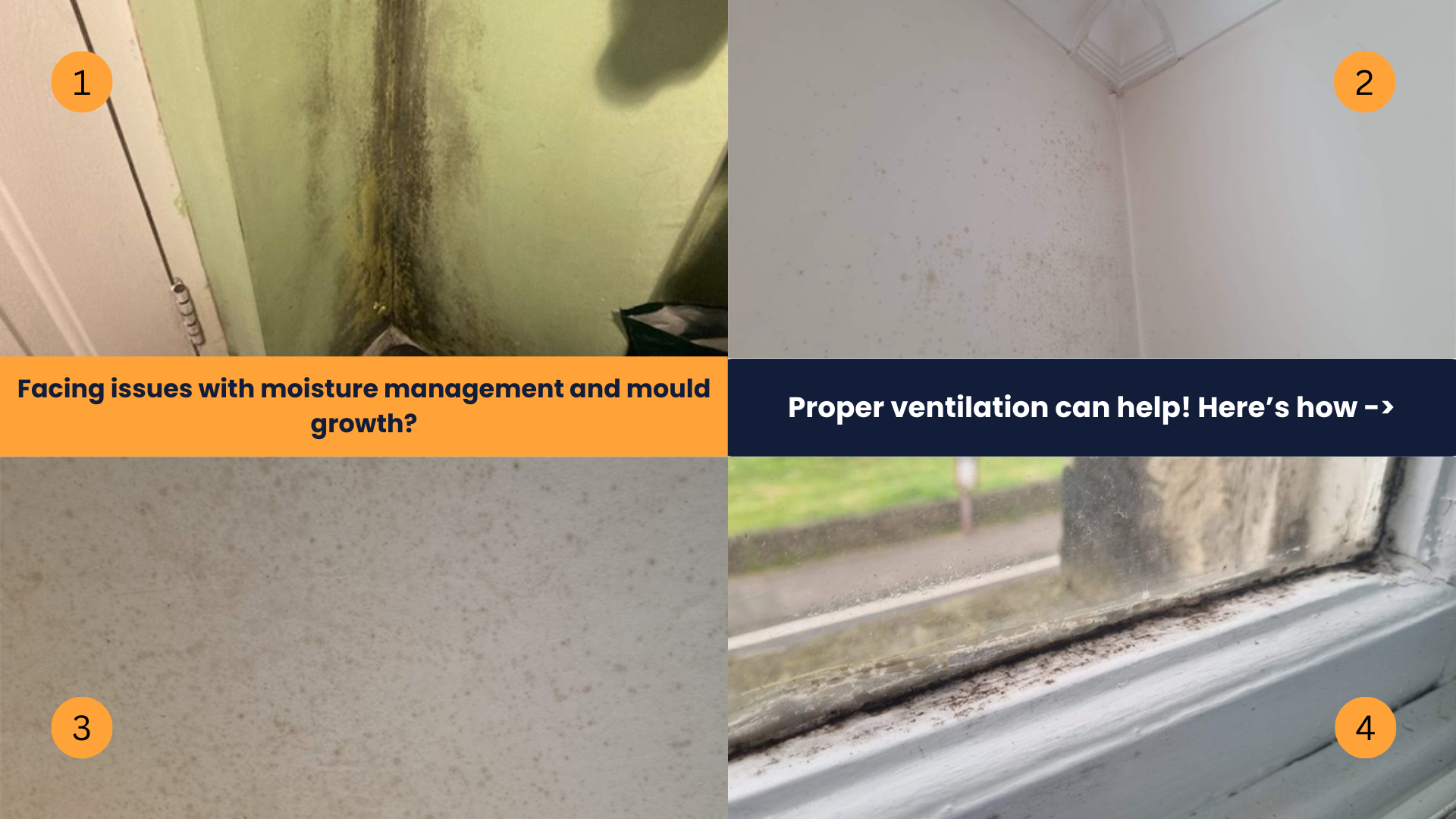Published on September 11th, 2024
Moisture and Mould: How Proper Ventilation Can Help
Managing moisture is key to a healthy home. Proper ventilation can reduce mould, improve air quality, and save energy. Simple fixes like upgrading windows and installing extractor fans can help, while whole-house systems provide continuous ventilation.

Moisture management is crucial for maintaining a healthy home environment. Excess moisture can lead to mould growth, which may cause respiratory issues and damage to your property. This blog explores effective ventilation strategies to combat moisture and prevent mould formation.
Understanding Moisture and Mould
Moisture is the primary factor supporting mould growth in residential settings. When moisture accumulates in poorly ventilated areas, it creates ideal conditions for mould to thrive. Common sources of indoor moisture include:
- Cooking and bathing activities
- Laundry
- Unvented combustion appliances
- Leaks in plumbing or building envelope
Proper Ventilation: A Key Solution
Implementing proper ventilation offers numerous advantages:
- Reduced mould growth risk
- Enhanced indoor air quality
- Decreased condensation on surfaces
- Improved thermal comfort
- Potential energy savings through humidity control
There are two primary ventilation methods:
- Natural Ventilation: Opening windows to allow air circulation
- Mechanical Ventilation: Using extractor fans or whole-house systems
Effective Ventilation Strategies
- Window Replacement:
Consider replacing old aluminium and steel windows prone to condensation. Modern, energy-efficient windows can significantly reduce moisture accumulation. - Roof Space Ventilation:
Ensure adequate ventilation in pitched roof spaces and timber joist flat roofs. Proper attic ventilation prevents moisture buildup and potential structural damage. - Targeted Ventilation:
Install or upgrade extractor fans in moisture-prone areas (bathrooms, kitchens, laundry rooms). Ensure fans vent directly outside, not into attic spaces. - Whole-House Ventilation:
Consider heat recovery (HRV) or energy recovery (ERV) ventilation systems. These provide continuous fresh air while maintaining energy efficiency
Conclusion
Effective moisture management through proper ventilation is essential for maintaining a healthy, comfortable home environment. By implementing these strategies, homeowners can significantly reduce the risk of mould growth and its associated problems.
Furbnow's Home Energy Plan service includes a professional survey of your home, a detailed plan outlining your options and their impact, and clear, actionable advice.
To get started, you can book a free assessment call or request a free quote for a Furbnow Home Energy Plan.
Written by

Vera Ho